Uncover the hidden stories of the Bible's lesser-known characters, where intrigue and morality intertwine in the shadows of history.
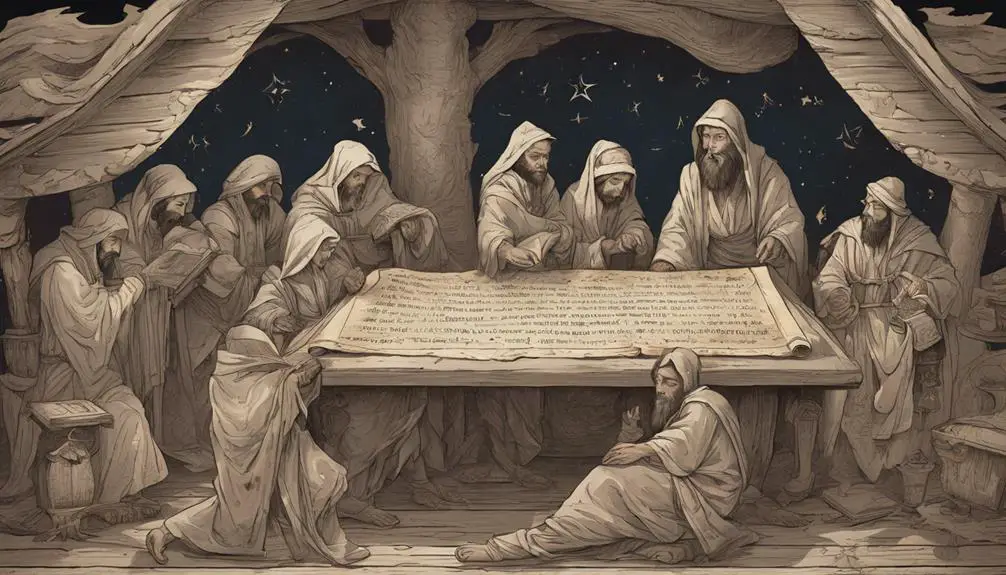
Obscure Characters in the Bible
Beneath the broad narratives of biblical heroes like Moses and David, you'll find a fascinating fabric of lesser-known characters whose tales are equally tantalizing.
Take Jael, for instance, the tent peg heroine, or Ehud, the left-handed judge, whose stories may not dominate Sunday sermons but offer rich layers of history, morality, and intrigue.
As you explore these obscure figures, you'll uncover hidden gems that challenge conventional wisdom and illuminate the Bible's complex humanity.
What truths and lessons lie in the lives of these overlooked individuals? You might be surprised by what you find.
Key Takeaways
- Obscure Bible characters offer deep lessons on empowerment, strategy, and divine favor through unconventional actions and faith.
- Stories like Jael's and Ehud's reveal the significance of unexpected heroes and the power of strategic thinking in achieving justice.
- Characters such as Gehazi demonstrate the dangers of greed and deceit, highlighting the importance of integrity and the consequences of moral failure.
- Through complex relationships and symbolic actions, obscure biblical figures teach about grace, reverence, and the lasting impact of our choices on our destiny.
Jael: The Tent Peg Heroine
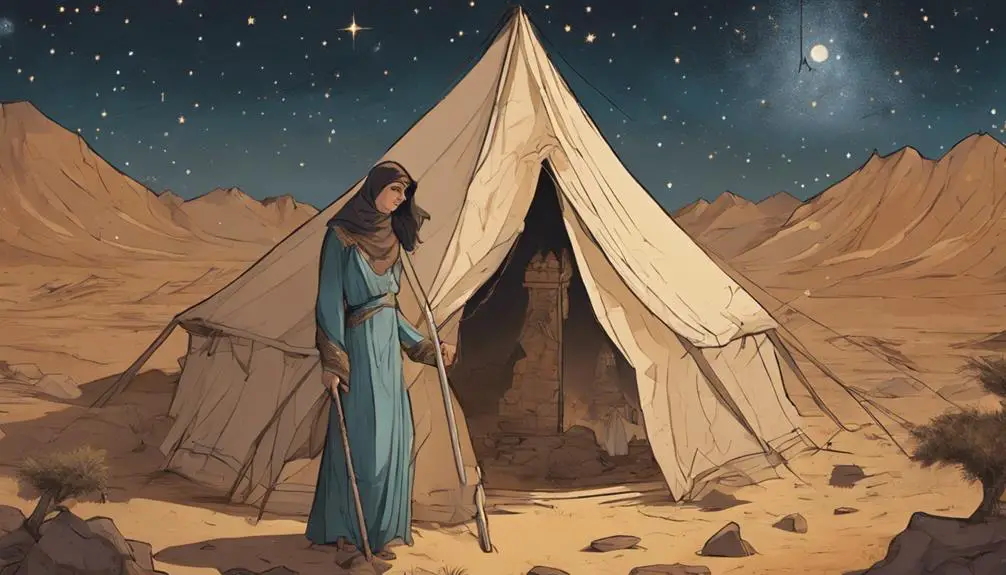
Among the lesser-known figures in the Bible, Jael stands out as a pivotal yet enigmatic heroine, whose decisive action with a tent peg not only alters the course of a battle but also challenges traditional gender roles in ancient narratives. Her story, deeply embedded in the context of tent warfare, showcases a remarkable instance of female empowerment. In an era dominated by male warriors, Jael's act transcends the mere physicality of her deed. It's a symbolic overthrow of expected behaviors and societal norms.
Analyzing Jael's narrative, you'll find her actions aren't just a moment of violence but a calculated intervention in a larger conflict. This act of using a tent peg, a mundane and domestic object, as a weapon of war, underlines the subversion of traditional roles and tools. Her home, typically a place of hospitality and safety, becomes the setting for a strategic and lethal maneuver. This juxtaposition emphasizes the unexpected power and resourcefulness of women in contexts traditionally dominated by men.
Jael's story, therefore, isn't merely about the physical act of defeating an enemy but a broader commentary on female empowerment. Her narrative challenges and expands the understanding of women's roles in ancient texts, suggesting a complexity and depth often overlooked in historical and religious studies.
Ehud: The Left-Handed Judge
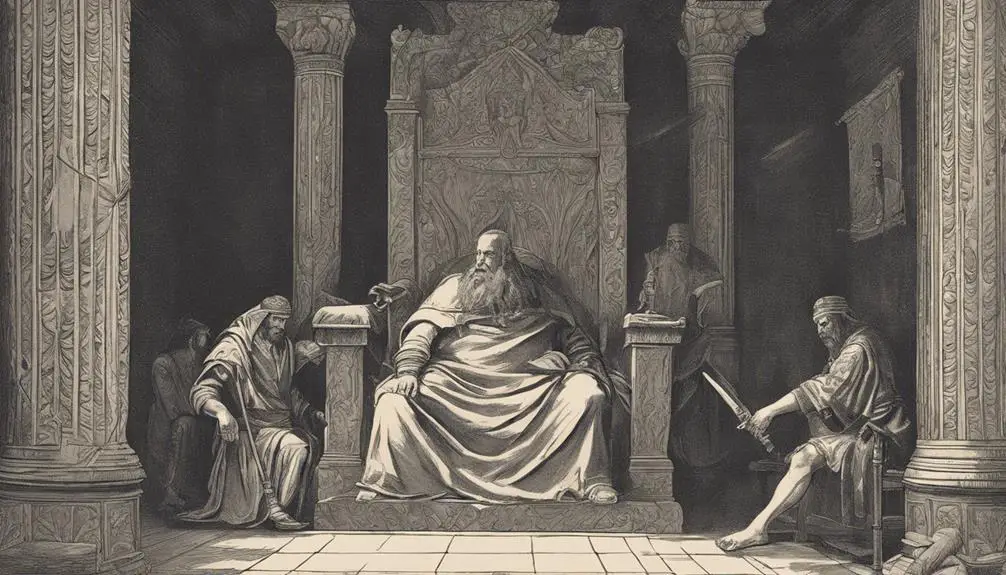
Ehud, a judge of ancient Israel, leverages his left-handedness in a strategic assassination that shifts the power dynamics and delivers his people from oppression. His story, though briefly mentioned, offers a profound insight into the utilization of what could be seen as a disadvantage, turning it into a pivotal advantage. The left-handed advantage becomes evident as Ehud crafts a double-edged sword, concealing it on his right thigh, a place less likely to be checked by guards due to the commonality of right-handed warriors.
Emotion |
Detail |
|---|---|
Surprise |
Ehud's approach to the Moabite king, Eglon, was unsuspecting, utilizing the element of surprise to his advantage. |
Cunning |
The assassination method was meticulously planned; Ehud's left-handedness allowed him to execute the assassination seamlessly. |
Relief |
His act led to the liberation of Israel from Moabite oppression, providing a sense of relief and freedom to his people. |
Admiration |
Ehud's strategic mind and courage are commendable, inspiring admiration among those who learn of his deed. |
Reflection |
This story prompts reflection on the potential hidden within perceived weaknesses, encouraging a reevaluation of one's capabilities. |
Ehud's narrative underscores the power of unconventional strategies and the importance of embracing one's unique traits to achieve liberation and justice.
Mephibosheth: Jonathan's Son
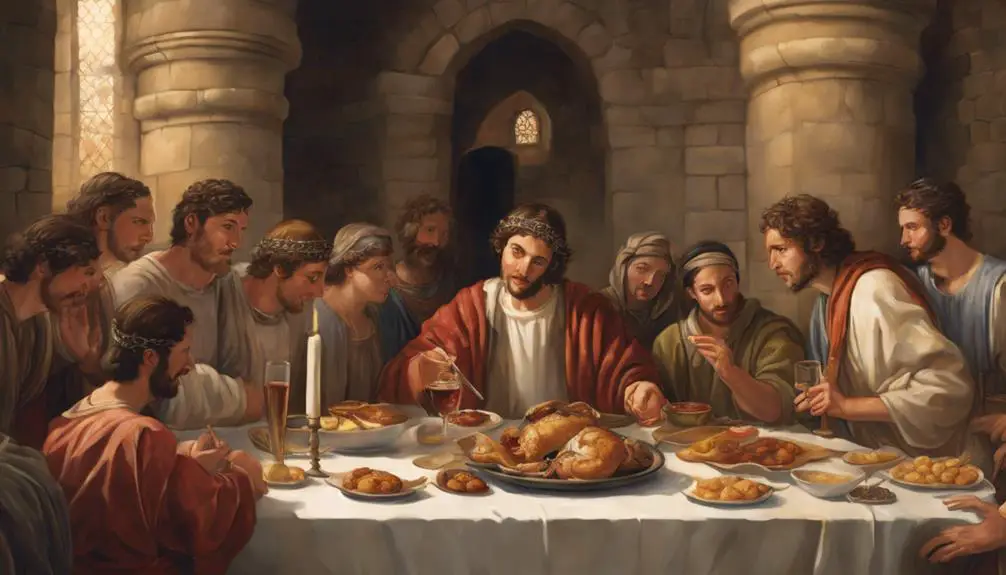
Despite his lineage as Jonathan's son and grandson to King Saul, Mephibosheth's story is often overshadowed by the more prominent figures in biblical narratives, yet his life offers a unique perspective on loyalty, grace, and the complexities of royal relationships.
Mephibosheth inherits a 'lame legacy,' both literally and figuratively, after an accident leaves him crippled in both feet—a condition that symbolizes his vulnerable position within the tumultuous political landscape of his time. His physical disability, in a culture that prized physical ability and lineage, marks him as an unlikely candidate for David's kindness and protection.
David's kindness towards Mephibosheth, despite the potential threat he represented as Saul's descendant, is a profound demonstration of his commitment to his covenant with Jonathan. This act of grace not only secures Mephibosheth's safety but also restores his dignity and position within the royal household. It's an emblematic instance of mercy triumphing over potential enmity and suspicion.
Analyzing Mephibosheth's narrative, one can't help but admire the layers of loyalty, grace, and political astuteness that underpin this relationship. David's actions towards Mephibosheth extend beyond mere kindness; they embody a strategic reconciliation that strengthens his own kingship by honoring his bond with Jonathan.
The Witch of Endor: A Forbidden Consultation
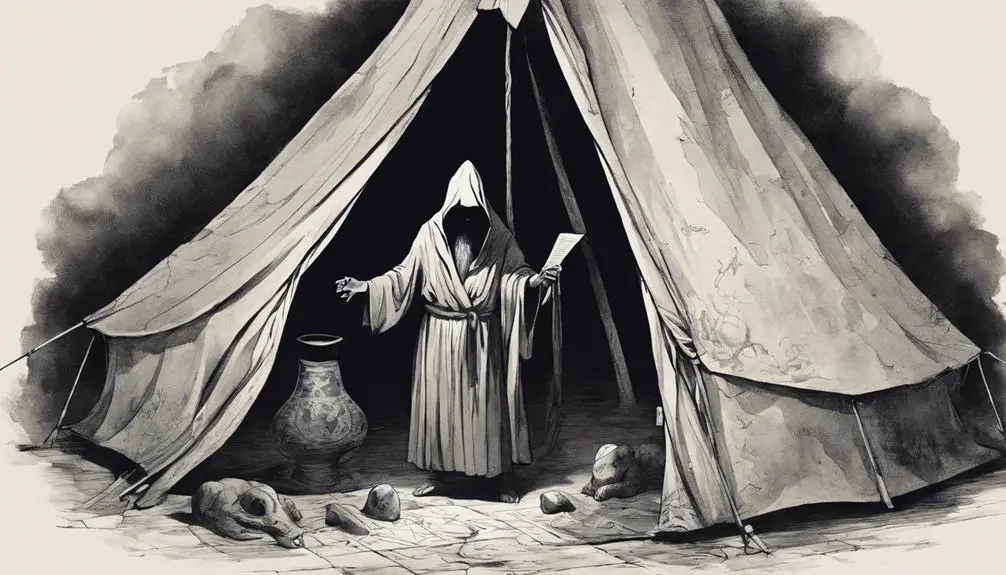
Shifting focus from acts of kindness within royal confines, we encounter a narrative steeped in controversy and forbidden practices with the story of the Witch of Endor. This tale, embedded in ancient texts, offers a complex examination of spiritual ethics and ancient necromancy, challenging both contemporary and modern perceptions of morality and the supernatural.
Here are three key aspects to consider:
- Invocation of the Dead: The Witch of Endor's ability to summon the spirit of the prophet Samuel at King Saul's request underscores the ancient practice of necromancy, forbidden yet still sought after in times of desperation.
- Spiritual Ethics: Saul's consultation with the witch, despite the explicit prohibition of necromancy, highlights a critical tension between political authority and divine law, questioning the limits of spiritual ethics in governing personal actions.
- Cultural Significance: The narrative serves as a pivotal moment in the discourse on the afterlife and spiritual intermediaries, reflecting the complexities of ancient beliefs and their implications on the moral compass of societies.
Analyzing the Witch of Endor's story through a scholarly lens reveals not just a tale of forbidden consultation, but a rich tapestry of spiritual ethics, ancient practices, and the perennial struggle between power, faith, and moral law.
Obed-Edom: The Ark's Guardian
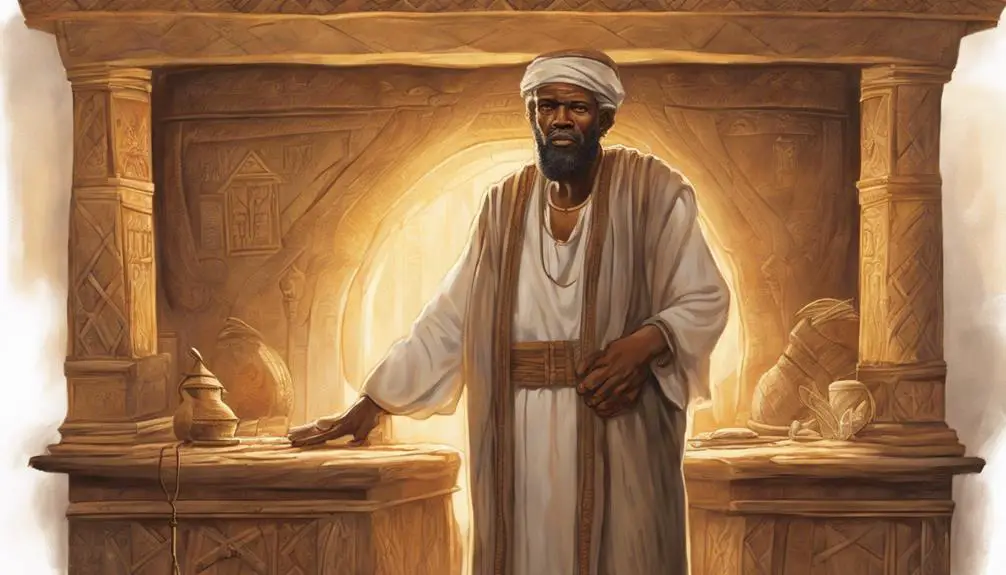
Turning our attention to Obed-Edom, we find a figure whose custodianship of the Ark of the Covenant reveals significant insights into the intertwining of divine favor and human responsibility. As you delve into the biblical narrative, it becomes clear that Obed-Edom's role transcends mere guardianship. His experience underscores a profound theological motif: the tangible blessings associated with obedience and reverence towards the divine.
Obed-Edom's story is pivotal, serving as a nuanced exploration of how sacred objects, like the Ark, impact those who interact with them. Notably, the Ark's presence within Obed-Edom's household didn't merely symbolize divine proximity; it enacted real, observable blessings on his family and possessions. This period marks a transformative phase, highlighting how divine favor doesn't rest upon the passive or the indifferent but thrives in an environment of respect and duty.
The narrative arc concerning Obed-Edom enriches our understanding of the Ark's impact, illustrating that its presence could either be a source of dread or blessing, contingent upon the attitudes and actions of its guardians. Thus, Obed-Edom's blessed household emerges not only as a testament to his faithful stewardship but also as a didactic tool, teaching subsequent generations about the rewards of harboring reverence towards what's deemed sacred.
Elisha's Servant Gehazi: Greed and Leprosy
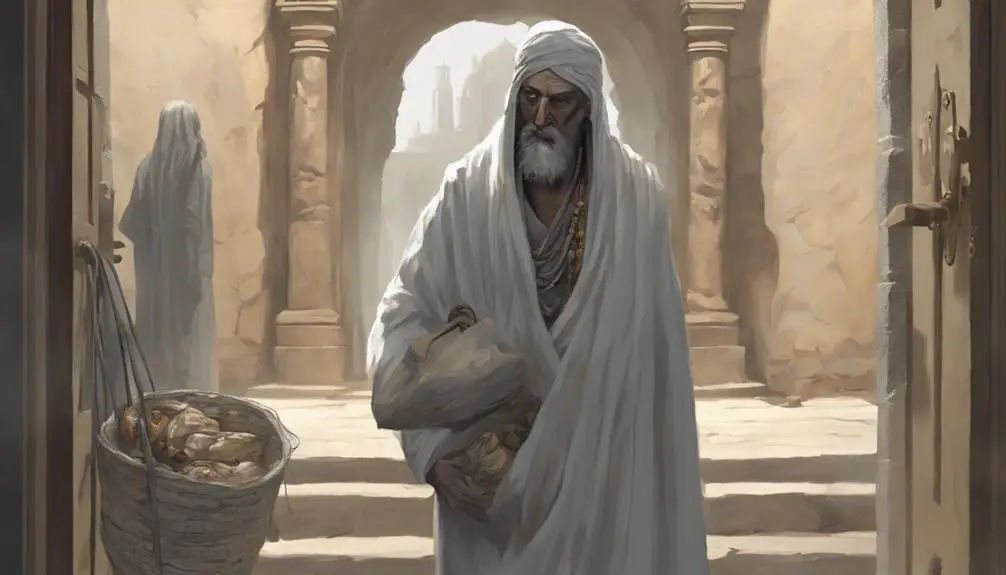
Exploring the story of Gehazi, Elisha's servant, unveils a cautionary tale about the perilous consequences of greed and the severe repercussions of deceit in pursuit of personal gain. Gehazi's downfall is a pivotal narrative that underscores the toxic allure of material wealth and the inevitable devastation it brings upon those who succumb to its temptation.
- The Temptation: Gehazi's story begins with his decision to deceive Naaman, a Syrian commander who experienced miraculous healing from leprosy through Elisha's intervention. Despite Elisha's refusal to accept gifts, Gehazi's greed compels him to lie to Naaman, claiming Elisha had sent him to collect a payment.
- The Deception: After obtaining goods under false pretenses, Gehazi's deceit doesn't go unnoticed. Elisha, endowed with prophetic insight, confronts Gehazi about his actions, exposing the servant's greed and the fabrication of his story.
- The Consequence: As a direct result of his actions, Gehazi is struck with leprosy, a physical manifestation of his moral and spiritual decay. This punishment not only signifies Gehazi's downfall but also serves as a stark reminder of the destructive power of greed and dishonesty.
Through Gehazi's narrative, the biblical text presents a profound meditation on the corrosive effects of greed and the importance of integrity in one's actions.
Frequently Asked Questions
How Did the Cultural and Societal Norms of the Time Influence the Actions and Perceptions of These Obscure Biblical Characters?
You're examining how cultural and societal norms shaped actions and perceptions, without mentioning obscure Biblical characters directly. Cultural artifacts and social hierarchies play crucial roles.
These norms dictated behavior and influenced how individuals were viewed within their communities. Your analysis should consider how deeply embedded cultural beliefs and the rigid structure of societal classes affected personal decisions and societal judgments.
This approach allows for a nuanced understanding of historical actions and societal perceptions.
In What Ways Do the Stories of These Characters Intersect With or Diverge From the Broader Theological Themes Found in the Bible?
You might think the stories of lesser-known figures don't matter much. However, their character development often reflects broader theological themes, intertwining with or diverging from major narratives in fascinating ways.
These stories aren't just footnotes; they offer critical insights into the Bible's narrative significance. By examining their journeys, you're able to see how individual experiences can echo or challenge larger spiritual truths, adding layers to your understanding.
Are There Any Archaeological or Historical Evidences That Corroborate the Existence and Stories of These Lesser-Known Figures?
You're diving into whether there's concrete evidence supporting the existence of certain figures, focusing on artifact verification and genealogical accuracy.
This quest often leads to mixed results. For some, archaeological discoveries offer intriguing clues, aligning artifacts with narratives. However, for others, the historical trail goes cold, leaving genealogical claims unverified.
Your analysis requires a critical eye, discerning between well-supported facts and those shrouded in historical ambiguity.
How Have Interpretations and Perceptions of These Characters Changed Over Time Within Different Christian Denominations and Jewish Traditions?
You're diving into how perspectives on certain figures have evolved, touching on character reinterpretation and denominational differences. These shifts reflect broader religious and cultural dialogues, highlighting how interpretations aren't static but fluid, shaped by time and context.
Different Christian denominations and Jewish traditions have reexamined these stories, leading to varied understandings. This evolution underscores the dynamic nature of religious texts, inviting you to consider the multifaceted ways these characters are viewed and valued.
What Role Do These Obscure Characters Play in the Moral and Ethical Teachings of the Bible, and How Are Their Stories Relevant to Contemporary Audiences?
You're exploring how stories contribute to moral and ethical teachings, focusing on character development and modern parallels.
These narratives, while seemingly minor, offer profound insights into human behavior and ethical dilemmas.
They're not just ancient tales but relevant lessons that mirror contemporary issues, challenging you to reflect on personal values and societal norms.
Through these characters, you're encouraged to examine deeper moral questions, demonstrating their timeless relevance and impact on today's ethical discussions.
Conclusion
In analyzing these obscure biblical characters, we uncover a tapestry of moral, spiritual, and human complexity that enriches our understanding of the biblical narrative.
The stories of Jael, Ehud, Mephibosheth, the Witch of Endor, Obed-Edom, and Gehazi, when investigated closely, reveal not just the multifaceted nature of divine interaction but also the profound impact of individual actions on historical and theological outcomes.
This exploration challenges us to look beyond the surface, recognizing the depth and breadth of character development within these ancient texts.


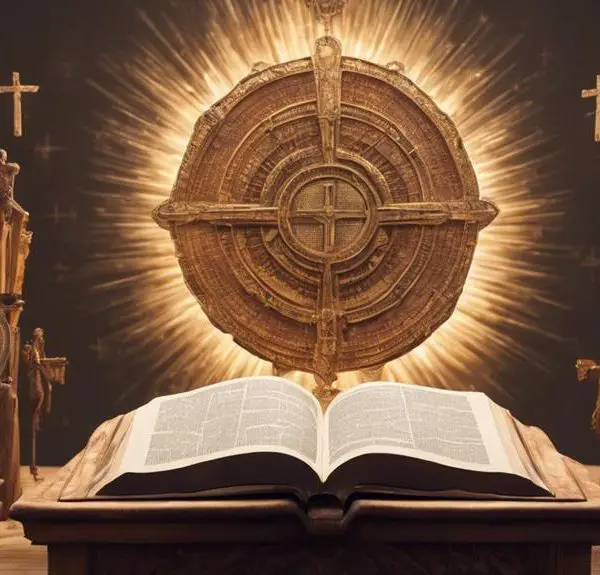
Sign up